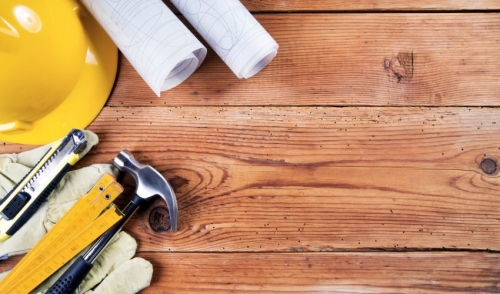
How to Plan for Building a Deck
With spring here and summer on its way, now is the perfect time to start thinking about your outdoor space. One way many homeowners choose to maximize their outdoor space is by building a deck that can be used for entertaining, grilling, dining al fresco, or even just for relaxing and getting some fresh air.
But there’s more that goes into a deck than just buying some lumber and a hammer. If you’re considering building a deck this spring, it’s important to do the following in preparation.
Determine if You Need an Architect or General Contractor
While not all decking projects require an architect or general contractor, some do. In fact, if your new deck will require a Standard Plan Review permit, you’re required to include information on your architect and contractor of record as well as detailed drawings of your new deck.
If you’re going to need an architect, it’s important to bring them in early in the process so that they can help ensure your drawings are done correctly and follow all required codes. This way, you won’t have to redraw them in the event of a failed permit application.
Identifying the Necessary Permits
Depending on the size of your porch, you need a permit to begin work. For example, according to the City of Chicago website, “the porch of an occupied single family home is less than 50 square feet and less than 6’0” off the ground no permit is required.” If you plan to create a larger deck than this, a permit is required.
If you’re new to the permit process, review the city of Chicago’s guide to permits. This will help ensure that you have any necessary paperwork and drawings ready when it comes time to apply for your permit. Your architect and contractor should be familiar with these permit processes and can help prepare the necessary documentation for you.
If you already have a deck and are looking to do repair work, you may qualify for the easy permit process. Learn more and see if you qualify, here.
In addition to city permits, it’s important to check with your homeowner’s association to see if there are any requirements or processes that need to be followed for your new deck.
Call 811
If you plan to build your deck on your own, don’t forget to call 811! 811 is the national call-before-you-dig hotline. This hotline will tell you if you’re planning to do work above any buried utilities, potentially saving you and your neighbors from unwanted service disruptions, costly repairs, or grave accidents.
811 will connect you to your state 811 representative so that you discuss the work you’re planning to have done. Then, locators will be sent to your home to mark the approximate locations of any underground utilities, so you can ensure that you safely work around them.
Consider Your Building Materials
When building your deck, you have a wide variety of options to consider for your materials. Instead of rushing to buy lumber, make sure to consider the pros and cons of each. For example, while composite lumber is an easy-to-maintain option, pressure-treated lumber is the strongest.
We’re sharing three common types of lumber for decking and the benefits of each here.
Begin Building
Once you’ve gotten any necessary approvals and permits, had your locator mark any buried utilities, and thought through your building material choices, it’s time to get to work. If you’re working with an architect and contractor, they’ll put together a project timeline that outlines the work to be done.
If you’re doing the work yourself, you’ll start by preparing your new deck site. For more info on the steps for a DIY deck, check out this step-by-step guide from The Spruce.
For all your lumber needs for your new deck, contact us. We can help you fulfill all your lumber needs with high-quality materials from companies such as Azek and Timbertech.


